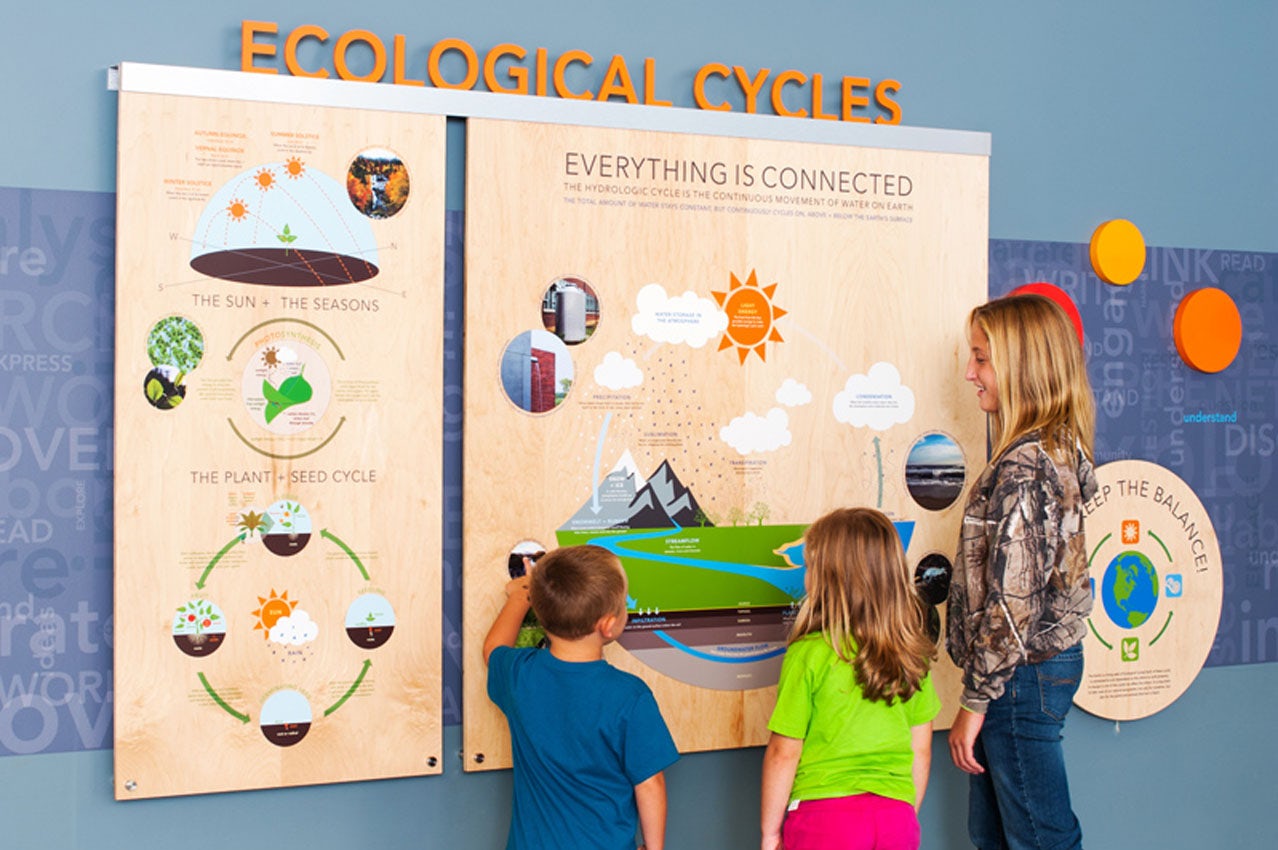This article was originally published by School Planning + Management magazine in their February 2016 issue.
Signs and graphics are signs of the times. Times are changing, and so too are signage materials, manufacturing, and, on a very different front, ideas about how signs and graphics can advance a school’s educational mission.
Brittney Butler, director of Environmental Graphics + Branding for VMDO Architects, offered ideas about an emerging graphics movement in schools.
“Educational buildings should not just be spaces for learning to take place, but should actively engage and spark imagination and inquiry at all levels and scales.” Butler points out that graphics can help schools achieve such things “by becoming teaching tools themselves.”
It’s part of the broad movement of experiential graphic design. The more common term, environmental graphic design, is problematic, because the word environmental in this instance refers to a built environment, as opposed to sustainability issues. It can be confusing. Accordingly, in 2013 an international association of diverse professionals who work in this design area changed its name to The Society for Experiential Graphic Design.
Experiential graphics can be designed to express infinite themes in order to meet the needs and goals of a building owner such as a school. One of the many themes is sustainability, so the natural environment is indeed one of the important and common themes that appear. Another theme is achievement — and Washington, D.C.’s new Ballou High School, whose main entrance is adorned with murals that include depictions of current student achievers. Other themes may be science, health and wellness, and others, and Butler’s firm, VMDO, is active in this area, combining its architectural and themed graphic designs to add another dimension to school buildings.
Most recently, VMDO has gone this route at its Buckingham Primary + Elementary School in Virginia, which has graphics primarily themed to health and wellness; and in another new school building, Discovery Elementary School, also in Virginia, a sustainability, nature and science theme called “Your Expanding World.”
At Buckingham, which opened its doors in 2012, some colorful graphics depict the entire cycle of plant growth, soil mechanics, gardening and food and seed cycle: all part of a positive process of education to help combat the national problem of childhood obesity, says Butler.
At Discovery, a net-zero energy consumption school completed and opened in fall 2015, VMDO uses graphics and signs to give curriculum-related names to building sections and rooms — a clear scheme that has fostered related lingo at the school. For example, the Pelican room in the Ocean hall, so instead of saying a room number, a child might say, ‘I’m a pelican in the ocean,’” Butler explains.
Signs continue to provide essential things such as building identity, messaging, directions and wayfinding amid various changes. And by doing so, such signs, like themed graphics, help a school function while focusing on its primary mission: educating students.
Some ideas about graphics and signage systems today:
- Keep an open mind about off-the-shelf electronic message center systems, if they are good quality, they can be cost effective, says Max Aronow. Ask about parts availability and durability.
- Expect a three- to five-year warranty for electronic signage systems, Rick Crawford recommends. And make sure that its software to easy to use.
- Sample some EMCs and try out their software before making a decision, Aronow adds.
- Ask about anti-graffiti features and options, such as clear coats on sign surfaces, Crawford says.
- Work with designers to create experiential graphics that engage students, says Butler. It’s not just about telling students that the messages are important, it’s also about showing students how they can make a difference.
Read the full article on webspm.com.

